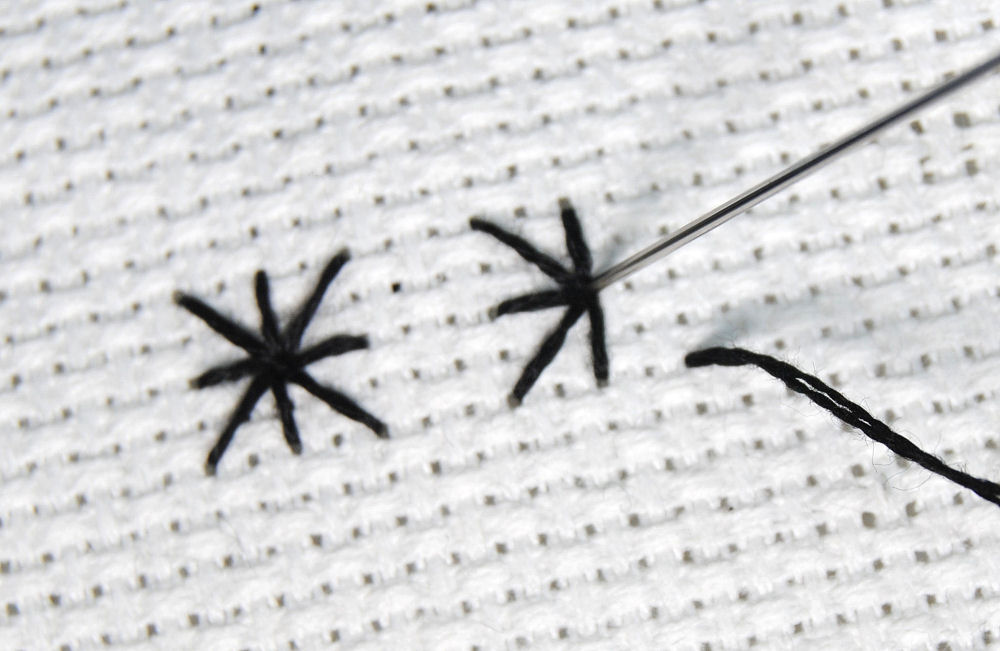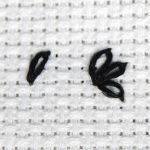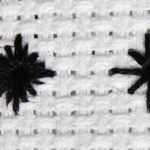This article is part of a series on Advanced and Specialty Stitches. Check the main article for a full list of stitches. This one is just about the algerian eyelet.
Table of Contents
What is an Algerian Eyelet
This stitch looks very similar to a Smyrna cross, except it has a hole in the middle. This lends itself as a little more versatile when it comes to decorative elements, as we’ll discuss later.
Like the double cross stitch, I’ve seen these used as stars, flowers, and border elements.
For a quick example using this stitch, take a look at this freebie design by Jeannette Douglas. Head on over to her site to download the pattern.
What does it look like in patterns?
The Algerian eyelet can look practically identical to a smyrna cross in pattern from. It covers the same areas, after all. You’ll want to refer to the pattern key or the sample stitch to confirm which stitch it is meant to be. If you see a hole in the middle, it’s an eyelet.
How to stitch an algerian eyelet

For an eyelet stitch, you always want to be stitching towards the center of the stitch. Whether you’re making a large or small one, start with one of the outer legs and stitch into the center.
Pulled alternative
If you pull your thread tightly as you go, it starts to create that distinctive hole in the middle that identifies it as an eyelet stitch. In the design example at the top of this page you can clearly see the eyelets have been pulled tight to make them stand out more compared to the normal cross stitches in the heart.
Sequin/Bead alternative
Some patterns may use this and other eyelet stitches to secure sequins in place. For example, the designer FabyReilly is fond of using sequins in her designs. Usually with a thread of a complimentary color.
Eyelets can also be used to secure beads in place flat, rather than on their side as is usual. Though you’ll want to use beads with relatively large holes and very thin needles. This stitch would have 8 strands of thread going through a small bead.
For both sequins and beads you’ll want to use a single strand of thread rather than the usual 2. This ensures the embellishment can still be easily seen.













